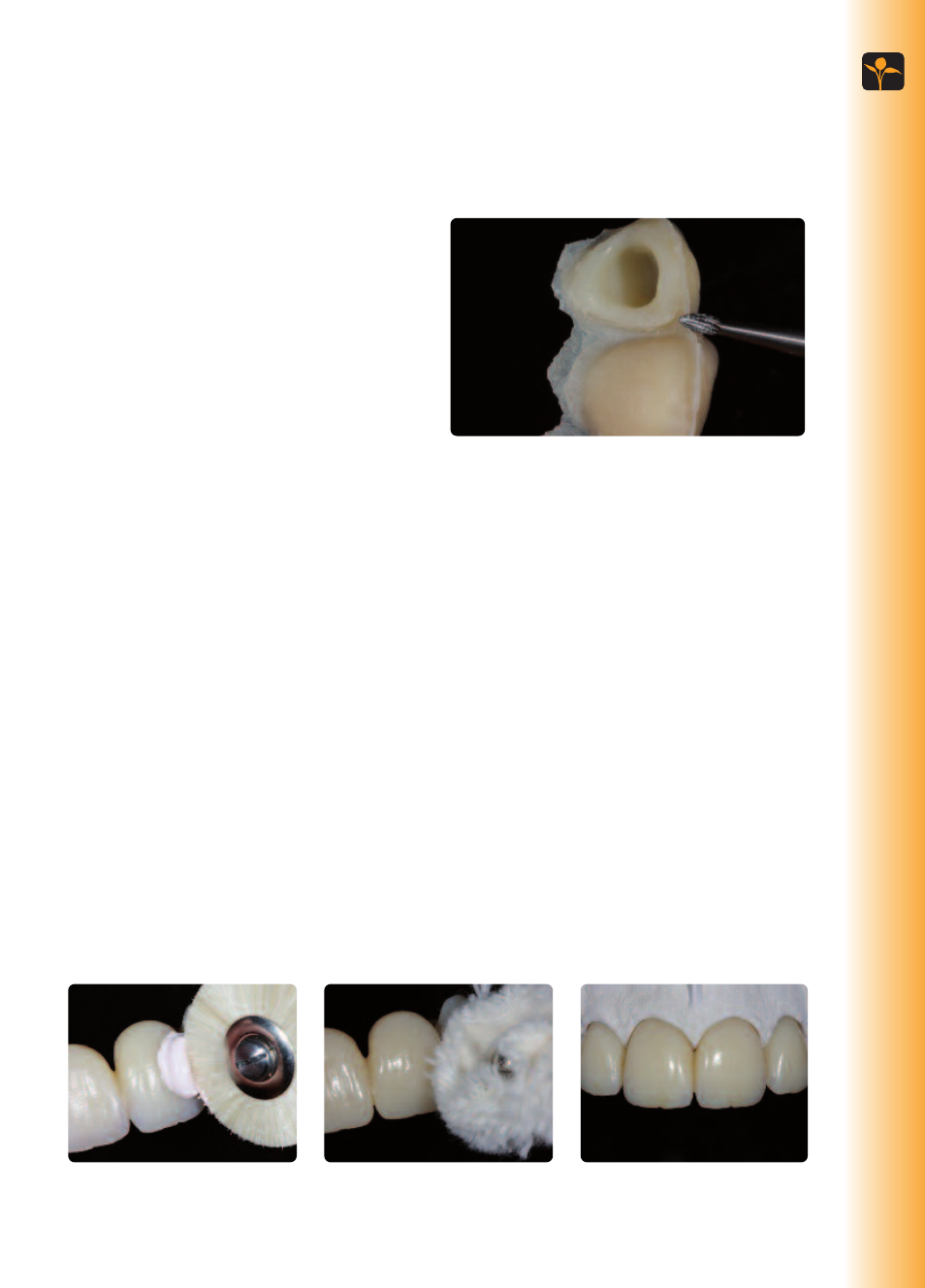Finishing and polishing – Ivoclar Vivadent Telio Lab User Manual
Page 21

Finishing and polishing
Finishing
Use (fine) cross-cut tungsten carbide burs to finish
Telio Lab restorations.
– Use cross-cut tungsten carbide burs for shape
adjustments.
– Overheating of the material must be avoided.
– The restorations are tried in on the dies and care-
fully finished.
– Check proximal and occlusal contact points.
– Make sure that the minimum thicknesses are
maintained even after the minor adjustments.
Polishing
Careful polishing is the prerequisite for an optimum esthetic result. Polishing reduces plaque acummula-
tion and the resulting shade disturbances.
– Pay special attention to crown margins, interdental areas, occlusal surfaces and the basal rest area of
pontics.
– Manual polishing of the restoration is carried out with rotary instruments and polishing paste.
Pre-polishing
– Smooth out the surface (convex areas) of the natural structures as well as the marginal ridges with
rubber polishers and silicone polishing wheels so that they exhibit an extra lustre after high-gloss
polishing.
– Pre-polishing is done with the handpiece/goat hair brushes and fine pumice / Universal Polishing Paste.
High-gloss polishing
– Polish the restoration to a high gloss using goat hair brushes, cotton or leather buffing wheels as well
as the Universal Polishing Paste.
– Use low speed and limited pressure for high-gloss polishing. Adjust the pressure with the handpiece,
not the polishing motor.
– In order to optimally polish the interdental areas and occlusal surfaces, we recommend modifying the
goat hair brushes to become star-shaped so that only the desired areas can be polished due to the
smaller size of the brush.
– Depending on the type of high gloss desired, leather buffing wheels can be used to achieve a high
shine, while cotton buffs are used to achieve a lower degree of lustre.
Polishing with a goat hair brush
High-gloss polishing with a wool buffing
wheel
Completed temporary restoration
Telio
Lab
–
Fabricating
temporaries
in
the
injection
technique
(syringe)
Removal of excess material
21
